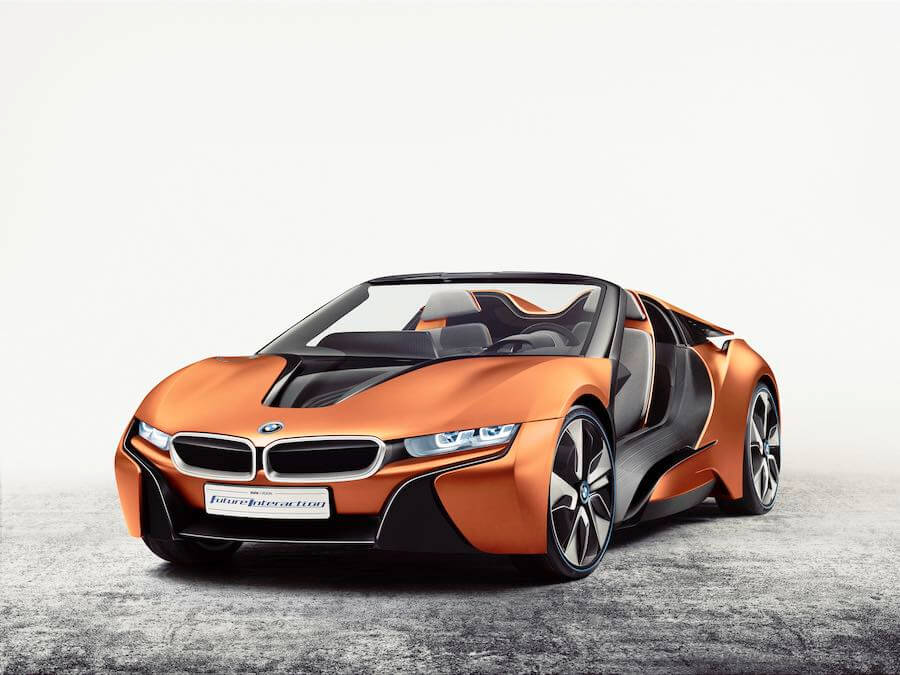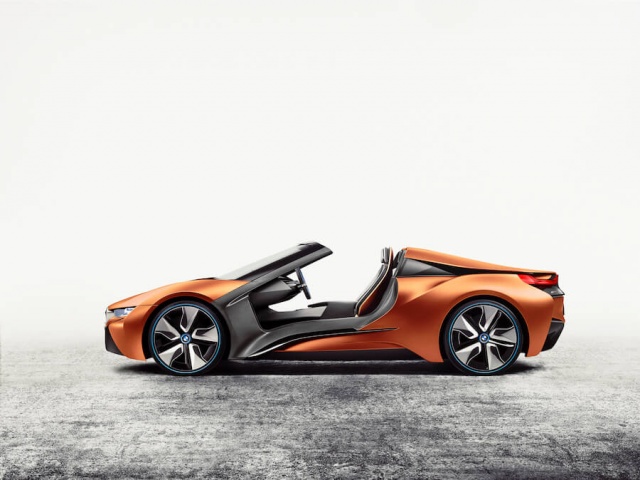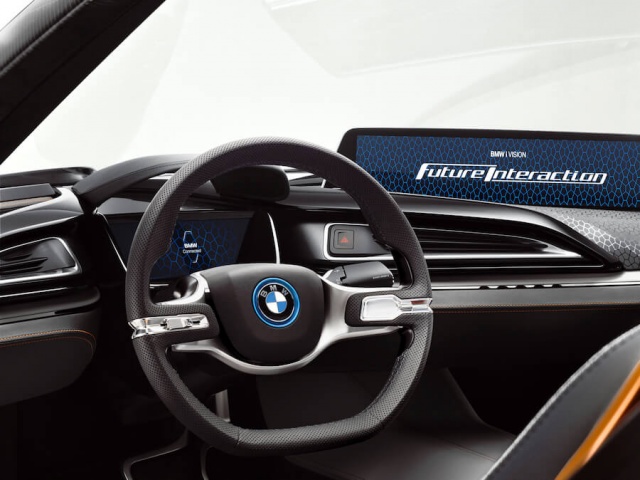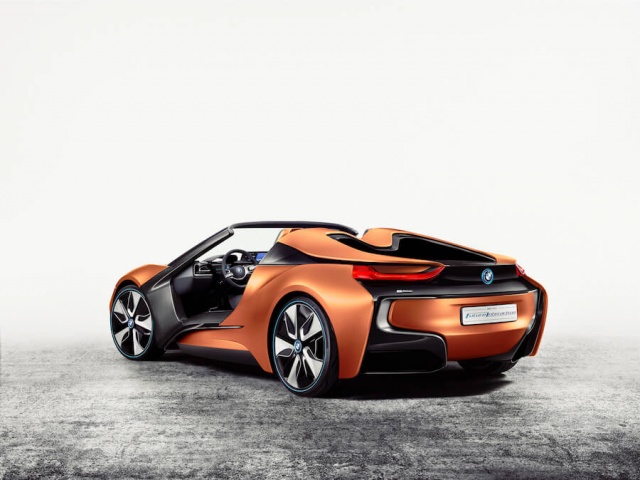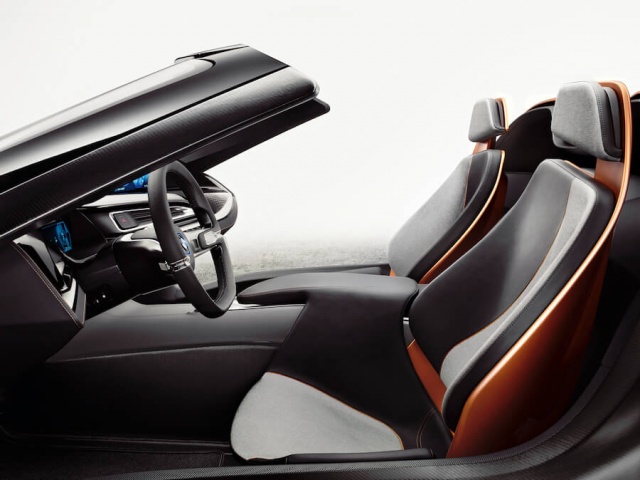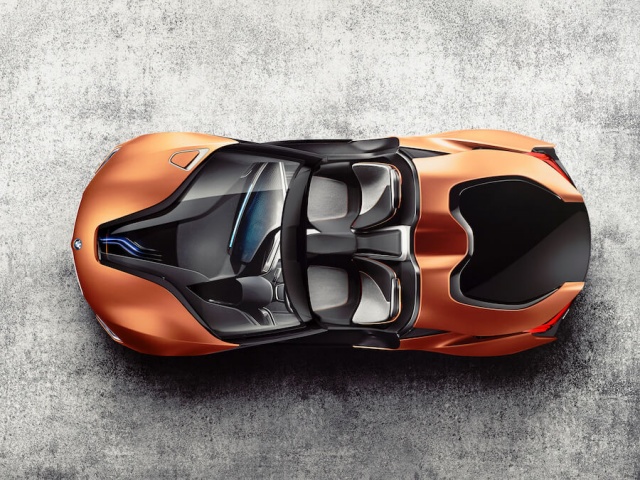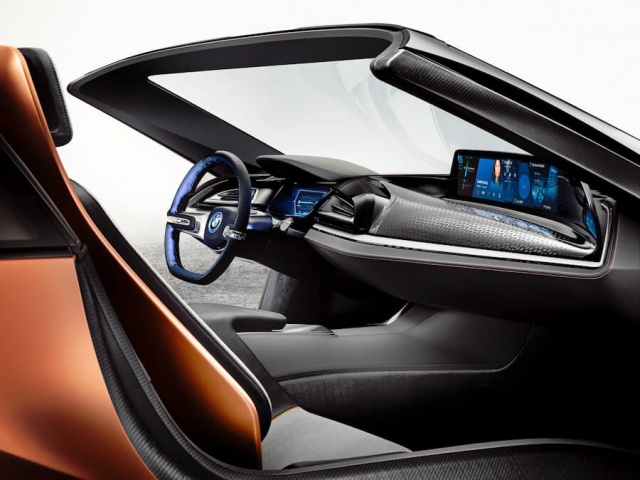What's the news?
BMW has chosen a radical, orange roadster to showcase its interactive technology at the Consumer Electronics Show (CES) in Las Vegas. The i Vision Future Interaction concept is based on the BMW i8 Concept Spyder and incorporates a wide 'panorama display' across the passenger side of the dashboard. Some of the ideas, such as gesture-based control, sound a little far-fetched but most of them will probably appear on production cars eventually. The roadster may also point to a convertible joining the i8 range some time in 2017.
Exterior
There are no doors or roof on the concept car, to help show off the high-tech interior. More significantly there are no exterior mirrors; instead cameras relay information to a display that replaces the interior mirror. BMW claims the system eliminates blind spots and can use warning icons to highlight approaching hazards.
Interior
The interior does away with most of the expected switches, knobs and buttons, opting for touch screen and gesture control. There is a drive mode selector to the driver's left to switch between three driving modes; 'Pure Drive which offers passive assistance, 'Assist' which activates collision prevention systems, and 'Auto Mode' where the car drives itself.
Information for the driver is relayed via a head-up display; giving vehicle speed, current speed limit and navigation data. A 3D instrument cluster behind the steering wheel shows speed, consumption and range; additionally, it warns of vehicles on the road ahead.
To prevent distraction, the panorama screen displays different information depending on which drive mode is in use. In auto mode the screen can be used to access the internet by the driver and passenger. BMW has developed something called AirTouch, which recognises hand gestures to control communication, information and entertainment functions on the large display screen. The idea is to replicate touch screen interaction without having to touch the screen.
Anything else?
Taking gesture control to the next level BMW also showed a smart, networked i3 designed to work with a 'Smart Home' and other smart devices. One of the functions available is gesture controlled parking; when the car identifies a suitable parking space the driver gets out and uses a special gesture, detected by a smart watch, to instruct the car to park and lock itself. Another gesture can be used to trigger the car to leave the space and position itself in the right direction to drive away.

